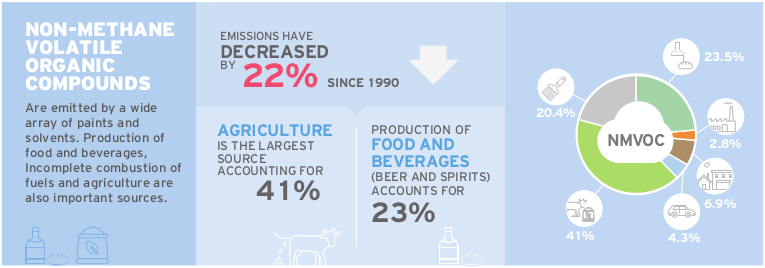Ireland’s ammonia emissions continue
to surge, exceeding EU limits, the Environmental Protection Agency (EPA) has
said.
A new report published by
the EPA has revealed that the expansion of the agriculture sector has played a
significant role in a substantial increase in ammonia emissions during 2018.
The report reveals that ammonia, non-methane volatile organic
compounds, sulphur dioxide, nitrogen oxides and particulate matter, are among
the country five chief air pollutants.
Since 2016, Ireland’s ammonia emissions have steadily increased with the agriculture sector being responsible for 99 per cent of ammonia pollution in the country. Although the surge has gone through periods of decline, Ireland remains non-complaint with binding EU limits for the pollutant, the EPA has warned.
The environmental agency has also
highlighted increases in Nitrogen Oxides (NOx) emissions – produced primally by transport and diesel-fuelled
vehicles – since 2010. However it notes that NOx
emission experienced a slight decline in 2018.
Emissions of non-methane volatile organic compounds
(NMVOC) – mostly produced from spirit production in the food and beverage
industry animal manures and fertilisers – and Particulate Matter (PM2.5) has
displayed marginal changes. Emanations of NMVOC mostly briefly decreased in
2018 while PM2.5 contamination underwent a small decrease, according to the
EPA.

Sulphur
Dioxide (SO2) emissions have followed a downward trend, the new report stated.
Those figures do not include the impact of the
coronavirus crisis on air quality, the EPA has confirmed.
A significant decline in the emissions of Nitrogen
Dioxide is widely attributed to paralysis of air travel and a substantial
reduction in economic activities during the ongoing Covid-19 crisis.
Not Sufficient
The environmental agency has warned
that even full implementations of the objectives of the Climate Action Plan may
not be sufficient for meeting 2030’s EU emissions limit. Albeit it strongly
advocates the actualisation of those objectives as having ‘co-benefits in terms
of reducing air pollutants.’
Last year, the EPA had also warned
that PM2.5 emissions in Ireland were consistently high,
transgressing World Health Organisation (WHO) Air Quality Guidelines Values.
This
pollutant has been highlighted as having the most significant negative
impact on the health of
the Irish population. It is responsible for 1,100 of a total 1,150
premature deaths in 2015.
Solid fuels, including coal, peat
and wood used for heating are the primary sources of PM2.5
pollution.
Another
recent EPA report on urban environmental issues revealed that NO2 pollution in
Dublin might already be above the EU safety ceiling. The M50 motorway, several
city-centre streets and the entrance and exit of the Dublin Port tunnel were
reported as the most polluted areas.
The Ammonia Threat
Dr Eimear Cotter, the EPA’s Director
of Office of Environmental Sustainability, emphasised the importance of moving
toward a significant decrease in emissions of all air pollutants to ensure air
quality and protect public health. Dr Cotter, however, placed a fine point on
the urgency of tackling ammonia emissions.
“Ammonia
emissions need to be addressed as a matter of urgency. The underlying drivers
are the use of animal manure and nitrogen fertilisers which can be reduced
through widespread adoption of on-farm measures,” she said.
Dr Cotter
stated that “switching to cleaner fuels, technology improvements and a
significant uptake of electric vehicles” are some of the necessary
measures that the Government must work toward their implementation.
Stephen Treacy, EPA’s Senior Manager also said that the Government
must take note of the recent findings and suggest solutions for addressing
issues concerning air pollution in its upcoming National Clean Air Strategy.
“The
National Clean Air Strategy, which is currently under preparation, will need to
propose measures to reduce air pollutant emissions, particularly where
non-compliance with the 2030 limits is projected,” he said.
He
continued that the transport sector is a consistent threat to air quality in
Ireland thanks to its ever-increasing “fleet of cars, vans and trucks.”
“It is
important that planned measures are implemented to reduce these emissions and
decouple them from economic growth, particularly as we exit current COVID-19
related travel restrictions,” he said.
Over 90 per cent of the world’s population is estimated to breathe polluted air that fails to meet recommended WHO air quality objectives, with air pollution influencing seven million untimely deaths every year. A new index from the Energy Policy Institute at the University of Chicago released last November described air pollution as a more significant threat to human lives than smoking and even war.
The EPA infographic on air pollutant emissions in Ireland can be downloaded here.
The post Ireland’s ammonia emissions continue to surge appeared first on Green News Ireland.











